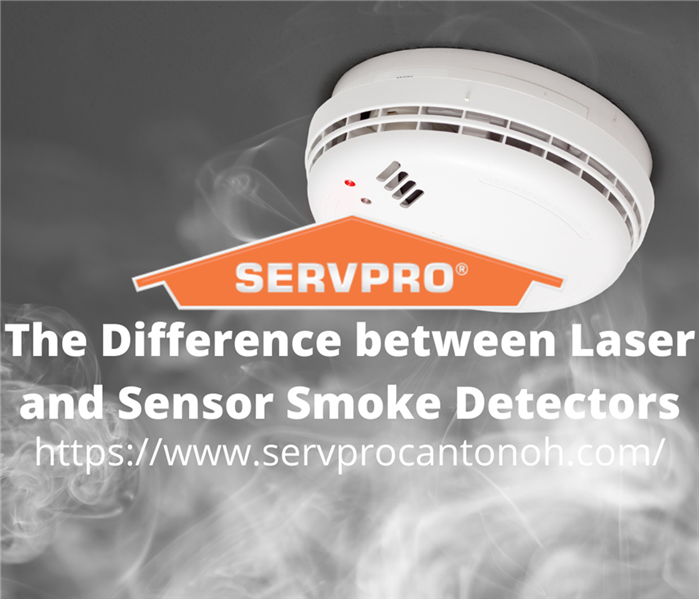The Difference Between Laser and Sensor Smoke Detectors
12/2/2020 (Permalink)
 Know the difference between these two smoke detectors to determine which one is best for your home or business.
Know the difference between these two smoke detectors to determine which one is best for your home or business.
Every so often, maybe once a year, you start hearing an annoying beep, every couple of minutes. It takes a few minutes to find the source, but once you do it becomes the first time you’ve thought about your smoke detector all year. Even then you just change the batteries and let it fall from your mind again. Smoke detectors are in place to save your life, so it's important to know you have the right one in your home.
There are two types of detectors: Ionization and Photoelectric, also known as sensor and laser detectors. Almost every home today is equipped with ionization detectors, but more and more people have been making the switch or addition of photoelectric. There are even states such as Iowa, Minnesota, Massachusetts, and Vermont that require the photoelectric system.
What’s the Difference?
Ionization Smoke Detector - An ionization smoke detector contains a small bit of radioactive material that sits between two plates with electrical charges; the charge ionizes the air and causes a current to move between the plates. If smoke enters this chamber, the ion flow is disrupted and the alarm sounds. Ionization smoke detectors are well equipped to sense the very small smoke particles produced by fast-moving, flaming fires.
Photoelectric Smoke Detector - This device aims a focused light source into a sensor chamber; when smoke enters the chamber, it reflects light, which then triggers the alarm. Photoelectric smoke detectors are best at detecting large smoke particles from slow, smoldering fires.
One of the major problems with Ionization sensors is false alarms. How many times have you been cooking dinner and the smoke detector goes off? It is common to just disconnect the battery and forget about it. In fact, recent statistics show that in 24% of home fire deaths, smoke alarms were present but did not sound; in half of those cases, there was a missing or disconnected battery.
Photoelectric detectors are best for responding to a slow-burning, smoldering fire and decrease the chances of safely getting out. These fires usually burn for a period without flames and most often start from a candle of cigarette flame. Ionization detectors take up to 10 minutes longer to detect these fires.
Ionization detectors respond faster to smoke from flaming fires than a photoelectric device does. Most flaming, fast-moving fires are a result of flammable liquids, wood, or paper catching fire. These are items that produce flames right away and do not have as much smoke as a smoldering fire. For this reason, photoelectric devices will provide family members with less advance warning to get to safety before hot, flame-intense fires engulf the residence.
The best way to keep your family safe is to have a blend of photoelectric and ionization smoke detectors. It’s too risky to go with one and not the other because there is no way to predict what type of fire threat your home may experience. Keep photoelectric in the bathrooms and kitchen areas to avoid false alarms. There are also dual sensors available that utilize both ionization and photoelectric technologies. Look into the options available to keep your home a safe haven.





 24/7 Emergency Service
24/7 Emergency Service